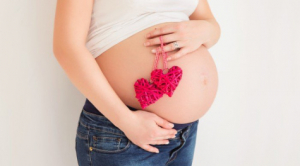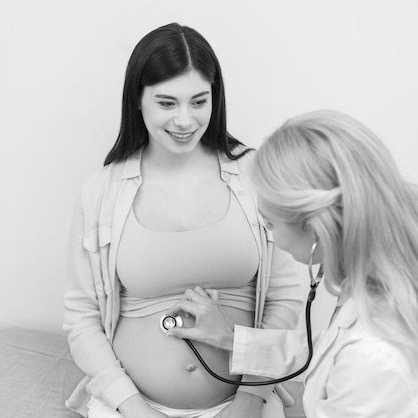The last trimester of pregnancy lasts from week 26 to week 40. However, if the pregnancy is prolonged or any problems arise, doctors may decide to induce labor. At this final stage of pregnancy, the belly is in the spotlight.
Many more or less serious discomforts are associated with the enlargement of the uterus and abdomen: back pain, heartburn, sleep problems, groin pain, shortness of breath, and constipation. Let’s take a closer look at the main problems of the third trimester.
Back pain
About 50–80% of pregnant women suffer from back pain. The reason is usually related to the normal postural changes typical of pregnancy. Especially in the third trimester, the center of gravity shifts forward, the lumbar curve becomes more pronounced, and the intervertebral discs experience greater load, which increases the likelihood of herniation. Other causes include hormonal factors (which cause back pain already in the second trimester), vascular factors, a sedentary lifestyle, or heavy work.
Insomnia
Several circumstances contribute to this. Anxiety before childbirth, which every woman experiences, as well as difficulties finding a comfortable sleeping position due to back pain and the growing belly. A pregnancy pillow can help solve this. And again, frequent urges to urinate due to the pressure of the uterus on the bladder. Putting all this together, it becomes clear why nights often become restless.
Heartburn
It can become very intense in the third trimester, although sometimes it appears already in the first. Pressure on the stomach leads to acid reflux into the esophagus, causing an unpleasant sensation. The solution is to eat frequently in small portions, avoid spicy and acidic foods, and not go to bed earlier than two hours after eating.
Swelling, heaviness, soreness in the legs
These are symptoms of fluid retention due to impaired blood outflow from the legs to the heart. The causes are varied: from improper nutrition (for example, excessive salt intake or lack of water) to an increased volume of circulating blood, from being overweight to lack of physical activity. To improve the situation, each of these causes should be taken into account.
Pubalgia
A condition characterized by pain in the pubic and groin area, near the pelvic bones. The problem is caused by tension in the muscles and tendons of the pelvic floor, as well as poor posture. In most cases, the pain is relieved by rest, taking a warm bath, wearing supportive underwear, and maintaining proper posture, especially when sitting.
Weight gain
Although weight gain generally occurs more slowly than in the previous trimester, it continues during the third trimester. Typically, the expected total weight gain by the end of week 40 is between 7 and 12 kg. The range depends on the woman’s weight at the beginning of pregnancy. This means that women with normal weight may gain up to 12 kg. Women who are overweight or obese should limit weight gain to 7 kg. There is also a third option: a woman who is underweight. In this case, gaining more than 12 kg is not only acceptable but also desirable to ensure a balanced pregnancy and a healthy ratio of fetal and maternal weight. The gained weight is not only the mother’s “fat,” although part of it – between the thighs, breasts, buttocks, and abdomen – is indeed present. The total also includes the weight of the baby (from 2.5 to 4 kg), the placenta, and the amniotic fluid.
Constipation
It may have accompanied you throughout pregnancy or appeared during this final period. In any case, it causes significant discomfort, especially if aggravated by hemorrhoids. During pregnancy, laxatives are prescribed by a gynecologist only in extreme cases, so alternative options should be sought through diet, hydration, and lifestyle changes.
Number of views: 448



















